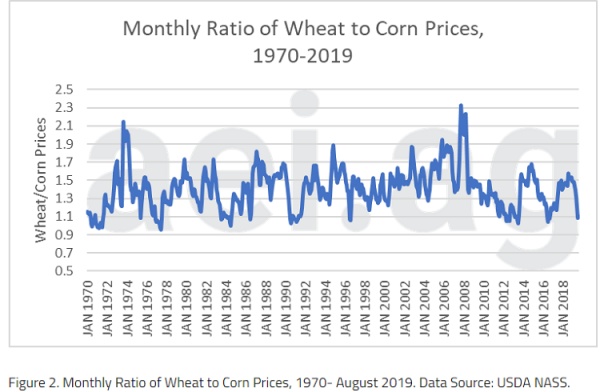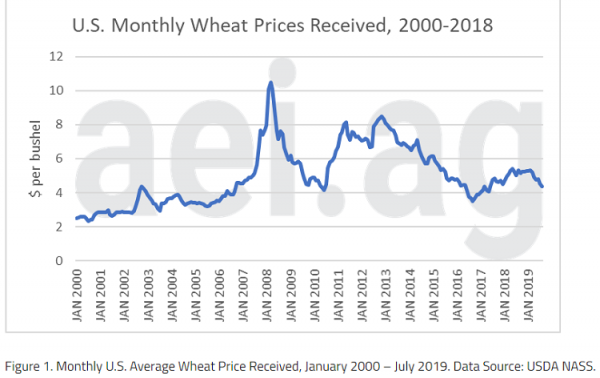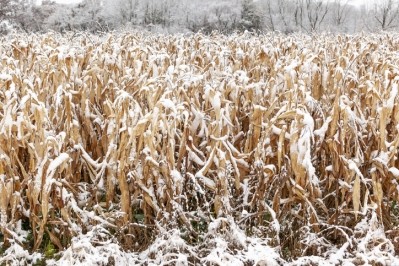Falling wheat acres could be boost for corn, soybeans in US

Winter wheat planting for the coming year has already started in the US, and about 65% of the crop was planted as of Monday [October 21] reported the US Department of Agriculture (USDA).
Acres planted in winter wheat have been falling in recent years, said David Widmar, agricultural economist with Agricultural Economic Insights (aei). Comparing US planting of wheat from 2015 to 2017, planted acres declined by about 8.9m or 16%.
Last year, producers in the US planted about 45.6m acres of wheat – a record low for production, he said in an analysis of the wheat market. Within the total crop, about 31.8m acres were planted in winter wheat.
Wheat acres, of course, have been in a downward spiral in recent years, pushing more corn and soybean into production.
He told FeedNavigator: “Those acres have to go to something – in those wheat-growing areas, they switched to corn and soybean.”
If the conditions for wheat continue to get worse, producers are going to look for alternatives – typically corn and soybeans, even if, following several years of large crops, market prices for corn and soybeans have been low, he added.
"Will it be a 50/50 split or slightly favoring [one crop]?” Widmar said. “The market will have a hand in deciding that.”
“In 2020, we could be running at the largest corn crop ever planted in the US."
Focus on wheat prices
Since the start of 2019, wheat prices have been higher than $4 per bushel, but have trended lower, Widmar said in a market analysis report. Prices this August showed a drop of 18% compared to that month in 2018.
The price ratio between wheat and corn typically has an average of 1.4, he said. Now it is about 1.1, implying that wheat prices have dropped and fallen relative to corn prices, which is expected to lower interest in wheat planting.
Covering production and variable costs would price wheat at about $5.25 a bushel, he told us. But the anticipation is that wheat producers could see prices between $4 and $4.50.
“The wheat market needs another dollar in it – at $4, producers have a hard time covering variable costs,” Widmar said. “That’s, roughly speaking, what they spend to get the crop in the ground.”
There are, however, practices that can be used to reduce production costs, he added.
The demand growth for wheat has not been large enough to offset increases in yield or to support additional acres being planted, Widmar said. An additional challenge for US wheat production is that the wheat raised tends to be more expensive than the crop produced in other areas.
There are multiple factors that producers consider before planting a feed crop, but the price can play a large role, he said. “There is not a strong price signal to plant wheat.”














